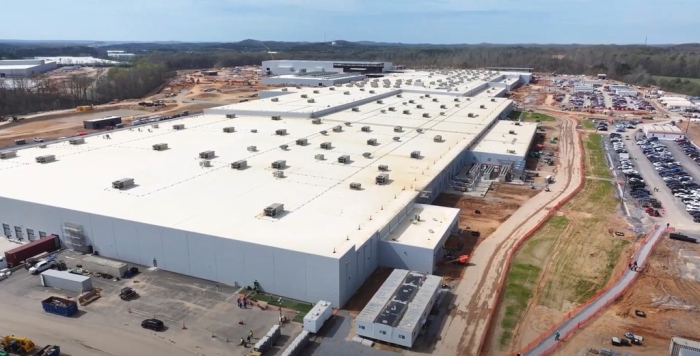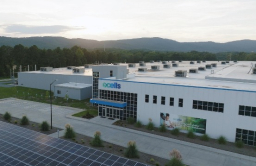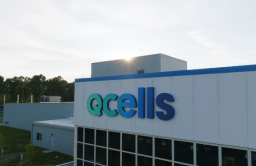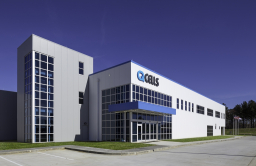-
KOSPI 2577.27 -2.21 -0.09%
-
KOSDAQ 722.52 -7.07 -0.97%
-
KOSPI200 341.49 +0.02 +0.01%
-
USD/KRW 1396 -2.00 0.14%
Qcells launches commercial operations at new plant in Georgia, US
Energy
Qcells launches commercial operations at new plant in Georgia, US
Qcells is considering using polysilicon produced at REC Silicon’s plant in Washington State to maximize US AMPC benefits
By
May 07, 2024 (Gmt+09:00)
2
Min read
News+

Hanwha Q Cells Co., a solar power unit of South Korea’s chemicals-to-defense conglomerate Hanwha Group known as Qcells in overseas markets, has started commercial operations of a solar module plant in Cartersville, Georgia, to tap into US federal benefits and cement its leadership in the world’s second-largest solar photovoltaics market.
The unit of Hanwha Solutions Corp. said on Tuesday it completed the construction of the module production lines at the complex last month to begin manufacturing. The move, along with its expansion of another plat in Dalton, Georgia, last year, made Qcells the largest silicon solar module maker in the US.
The Cartersville complex, a key unit of Qcells’ solar energy hub in the US, secured annual solar module production capacity of 3.3 gigawatts (GW) with the plant. That raised Qcells’ module capacity in the US to 8.4 GW, enough to generate electricity for 1.3 million US households per year.
Once the Cartersville complex operates its facilities, Qcells is poised to become the only company in North America to manufacture across the entire solar photovoltaics value chain. The company said it is expected to produce an annual capacity of 3.3 GW for ingots and wafers, 12.2 GW for cells and 11.2 GW for modules, respectively, next year in the US due to the construction and expansion of facilities, as well as improved module efficiency.
“Hanwha Q Cells aims to strengthen its leading positions in major strategic markets including the US by raising capacity and expanding renewable businesses at the same time,” said CEO Lee Koo Yung in a statement.
TO MAKE FULL USE OF FEDERAL BENEFITS
Qcells said it expects to boost its US federal government tax credits by $140 million if the Cartersville factory produces 2 GW of modules. The company has already been receiving advanced manufacturing production credit (AMPC) under the Inflation Reduction Act (IRA), which aims to support the renewable energy industry in the US.
The benefits are expected to increase to 1 trillion won ($735 million) once the company manufactures everything including ingots, wafers, cells and modules, it said.
Qcells is considering using polysilicon, which REC Silicon ASA produces with eco-friendly hydroelectric energy at its plant in Moses Lake, Washington, for the solar energy hub to maximize the federal benefits.
Hanwha Solutions, which acquired a stake in REC Silicon, last September signed a 10-year contract to buy eco-friendly polysilicon from the US company.
Qcells also plans to procure ethylene vinyl acetate (EVA) sheets used in solar modules as an encapsulating agent due to their good radiation transmission and low sunlight degradability from a factory built by Hanwha Advanced Materials Corp., a subsidiary of Hanwha Solutions, near the Cartersville complex.
Write to Hyeon-woo Oh at ohw@hankyung.com
Jongwoo Cheon edited this article.
More To Read
-
Jul 03, 2023 (Gmt+09:00)
-
Jan 11, 2023 (Gmt+09:00)
-
Nov 19, 2021 (Gmt+09:00)





